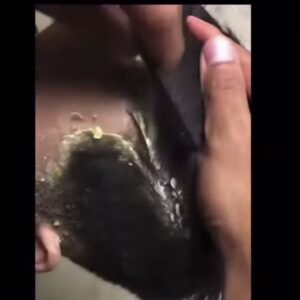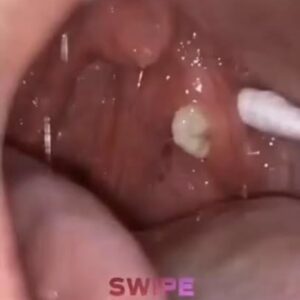Evolutionary Tactics of Parasites (00:06-00:28): Parasites evolve to exploit hosts, utilizing various strategies to steal nutrients and ensure their survival, sometimes requiring complex life cycles involving multiple hosts.
Cordyceps Fungus and Ants (00:48-01:47): The cordyceps fungus manipulates jungle ants to climb high and bite down on plants, allowing the fungus to grow and release spores from an elevated position.
Flamingolepis Liguloides and Sea Monkeys (02:11-02:34): This tapeworm infects sea monkeys, altering their color to attract flamingos, which consume them, facilitating the tapeworm’s lifecycle.
Phengaris Arion Butterfly (03:20-03:46): Butterfly larvae mimic ant larvae to be taken into ant nests, where they consume the ant’s brood before emerging as adult butterflies.
Toxoplasma Gondii and Rodents (08:07-08:52): This parasite manipulates rodent behavior to increase predation risk by cats, enhancing its chances of reaching its feline host for reproduction.
Transcript: “(00:06) Evolution is not a friendly process. It works via blind forces and only favors those with mutations that help individuals pass on genes. This can lead to organisms with sublime appearances and traits, we find impressive. But it also can lead to some terrifyingly sneaky parasites. Parasites, are everywhere. (00:28) Almost every species will have another species that has evolved to latch on, or inside it, and steal nutrients from it. Sometimes, all a parasite has to do is, fly up, and bite you. Still, some parasites have fiendishly complex life cycles which require multiple hosts to complete. Here are 10 tricks that parasites use to trap their hosts. (00:48) Perhaps the most famous parasite at the moment is the cordyceps fungus which preys on jungle ants and other insects. Ants tend to stick fairly close to the jungle floor as that is where most of their food is. Being on the ground is not what the fungus needs. It needs to be high up if it is to catch another ant to grow in. (01:08) By sending small growths into the ant’s brain and releasing chemical signals, it causes the ants to climb up plants. Once high enough, the fungus causes the ants to bite down on the vein on the underside of a plant leaf. This is known as the death bite, as the ant will remain anchored to this spot even when dead. (01:27) In this position, the fungus is ready to flourish. Having eaten all the nutrients inside the ant, it bursts out of the ant’s exoskeleton and builds a tall spike that will release spores. From the high vantage spot, the spores rain down on the ants below, and a new generation of infection and control can begin. (01:47) This parasitic mind control is at least 48 million years old, as fossil ants still stuck in the death bite position have been found. When we look at flamingos, we marvel at how pink they are, but few people realize why they are the shocking shade they are. Some will tell you it is because they eat pink shrimp, but this is only half the answer. (02:11) It all comes down to parasites. Many people kept sea monkeys as children. However, instead of the fun and playful creatures on the packaging, these monkeys are really small shrimp. They also make up a majority of what flamingos eat and give the birds their pink color. But the reason sea monkeys go very pink is because they are infected with a tapeworm called Flamingolepis liguloides. (02:34) These worms grow to adulthood inside flamingos, but to get there, they must be eaten by the birds, so they make their sea monkey hosts as attractive as possible. They cause the sea monkeys to turn red for easy visibility and make the shrimp gather together in large swarms by making them more sociable. A fun party for the shrimp, until they are eaten. (02:59) When you see a beautiful butterfly fluttering by, it probably does not make you think of parasitism. The large blue butterfly, which has one of the most descriptive names in nature, starts its life by tricking ants into caring for it. The butterfly, Phengaris arion, has evolved so that its young look similar to the larvae of myrmica ants. (03:20) But the subterfuge goes much deeper. The butterfly larvae also smell like the ant’s young. Once hatched, the butterfly larvae will drop onto the ground near an ant nest and wait for an unsuspecting ant to come by. Finding what it thinks is an ant larva that has escaped the nest, the ant drags it inside. While inside the ant nest, the larva would eat all the ant larvae and egss, until it gets enough energy to pupate and becomes a chrysallis. (03:46) After almost a year in the nest, it finally emerges out as a beautiful large blue butterfly. The South American ant Cephalotes atratus is not very notable. It is plain black in color, and its only party trick is being able to glide when it falls by using its legs. Its thick black plating makes it a vaguely unattractive prey for birds. (04:11) That all changes when it is infected by the nematode parasite Myrmeconema neotropicum. On infection, the parasite causes the ant’s exoskeleton to grow much thinner. This makes them easier to eat, but it also thins it to change the ant’s color. Pushing red pigments toward the surface of the ant’s body makes its abdomen resemble a red berry. (04:33) Birds then swoop down and eat the fake berries, which allows the parasite to move to its next host. In the bird’s digestive system, the parasite lays its eggs and defecated out by the bird. Snails do not have a glamorous life. Crawling slowly along the ground, they can be infected with any number of parasites. (04:54) One of them is the psychedelic Leucochloridium paradoxum, which directly causes its host to be eaten in an eye-catching way. This parasitic fluke invades the snail and slowly extends throughout the snail until it has consumed around 20% of its host. It then develops brood sacs which push into the eye stalks of the snail and begin to pulsate. (05:16) These moving, green-banded protuberances will draw the attention of any passing bird looking for an easy meal. To make doubly sure that the snails are eaten, the parasite changes the snail’s behavior so it is more likely to remain in well-lit places. Once the snail has been consumed, the parasite migrates to the bird’s digestive tract and begins laying eggs. (05:38) These fall to the ground in the natural course of birds pooping, waiting for other snails to slither over them. In the insect world, there is a parasitic beetle that only targets males of a species. Male bees to be specific. The larvae of the blister beetle





